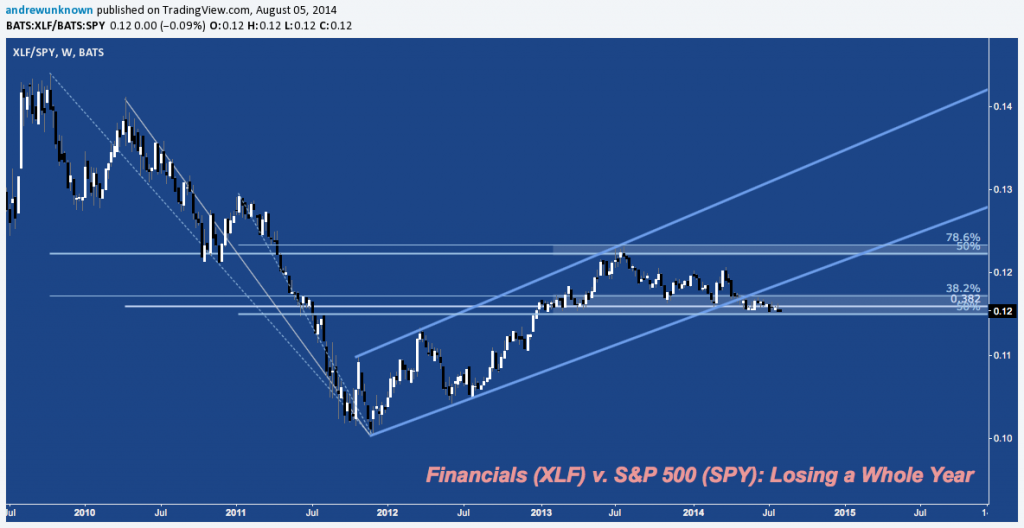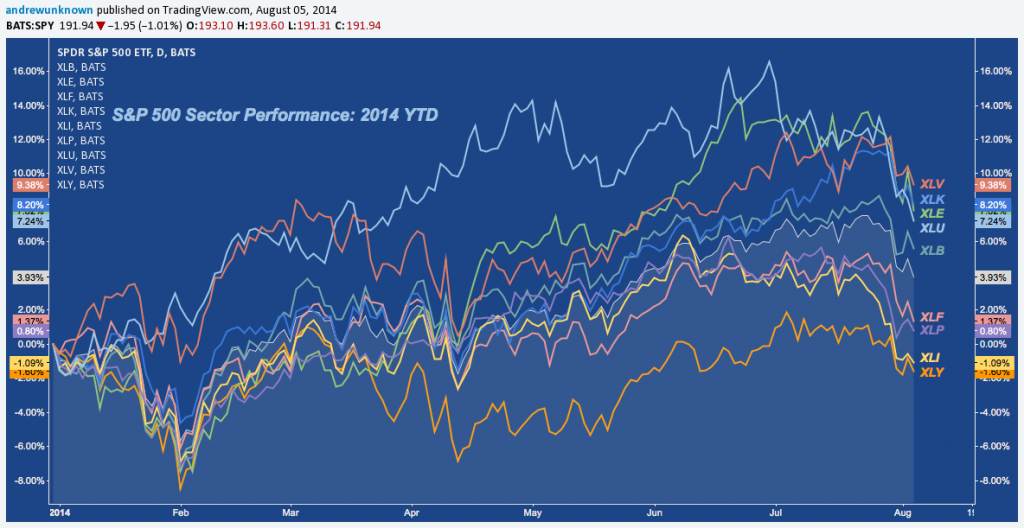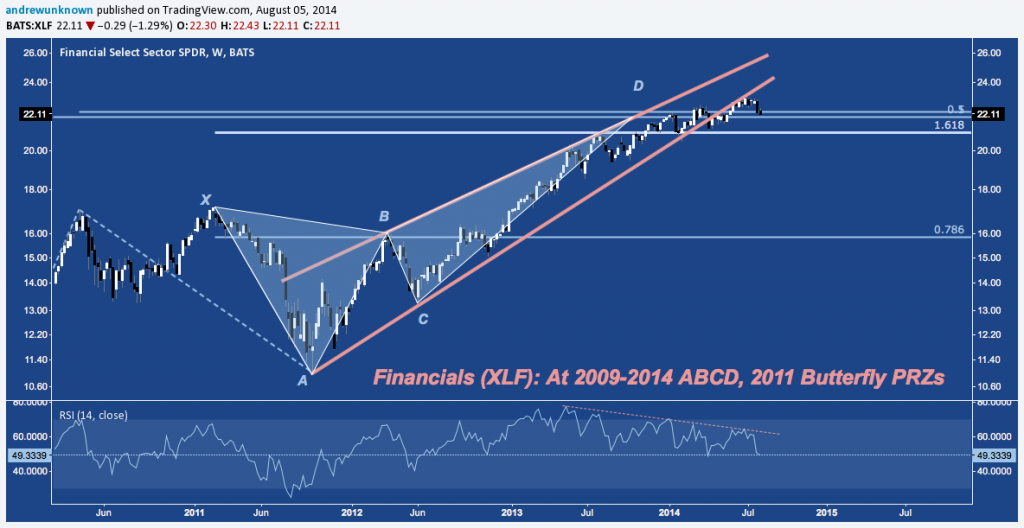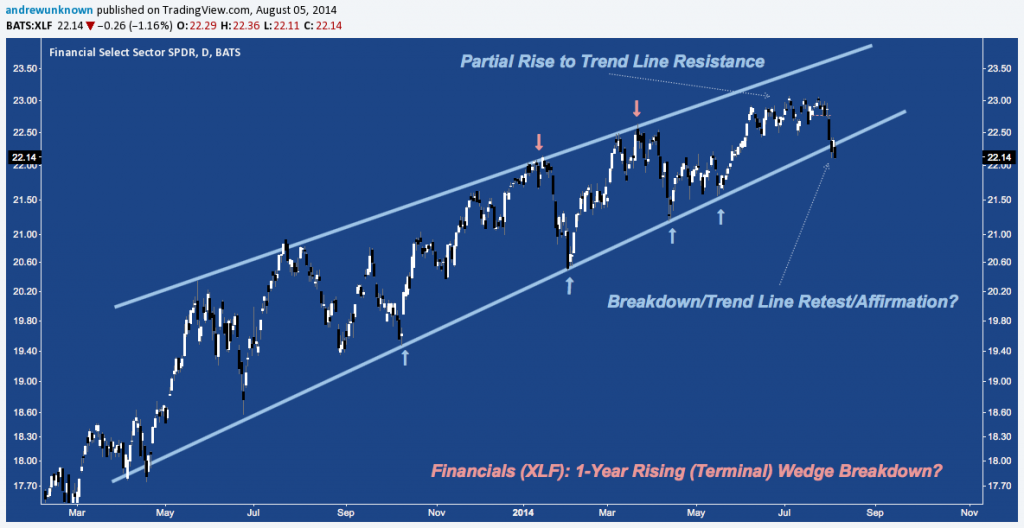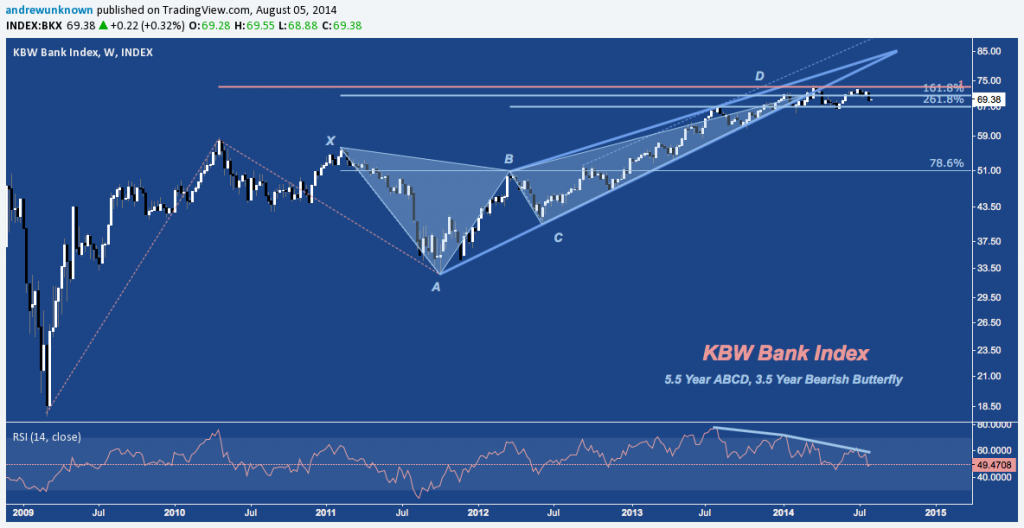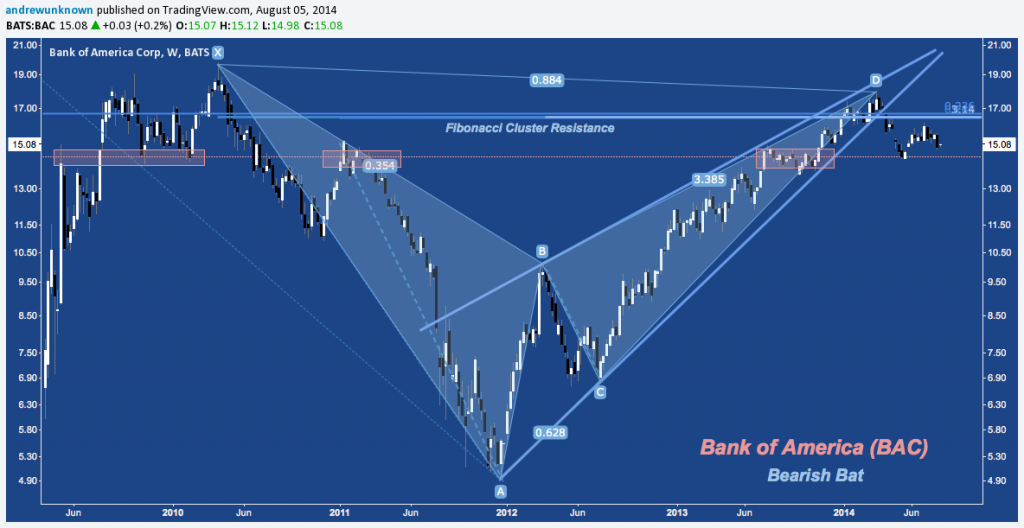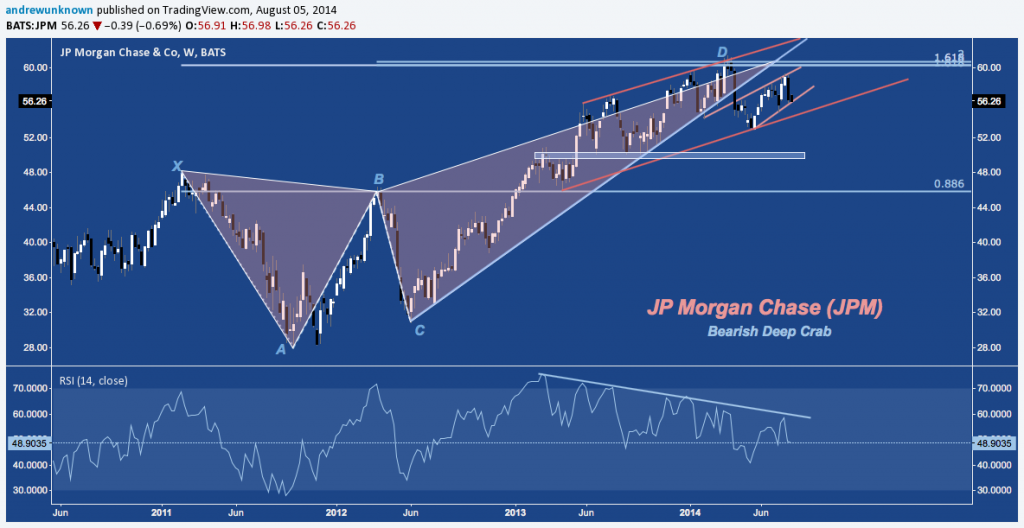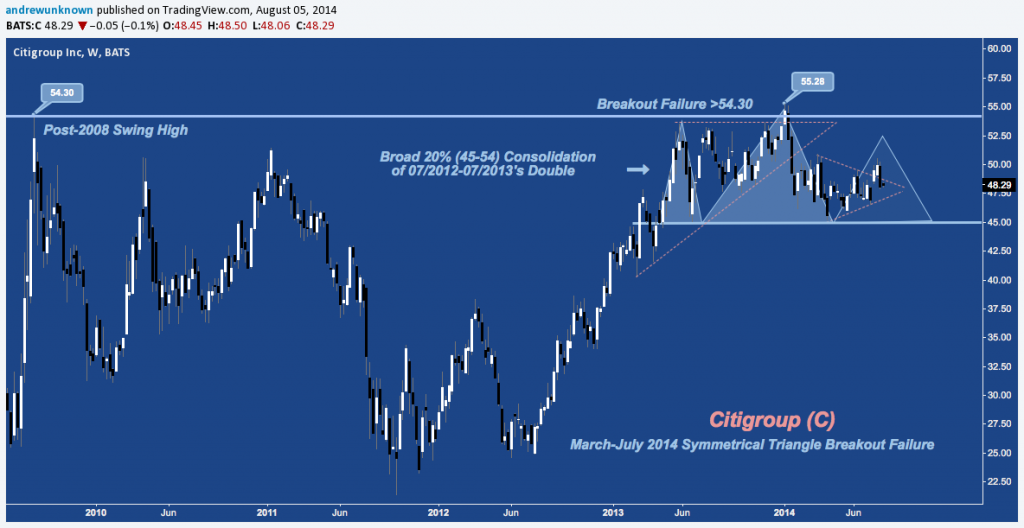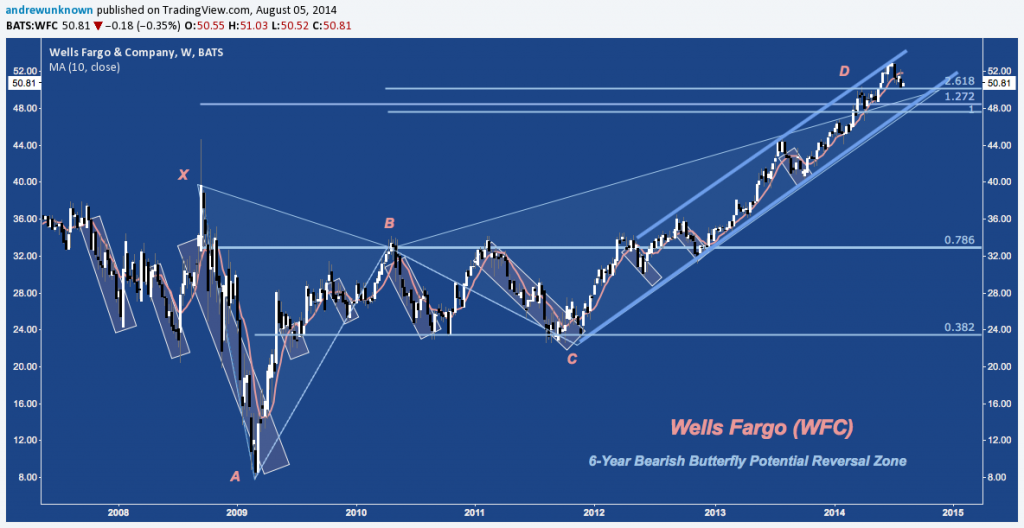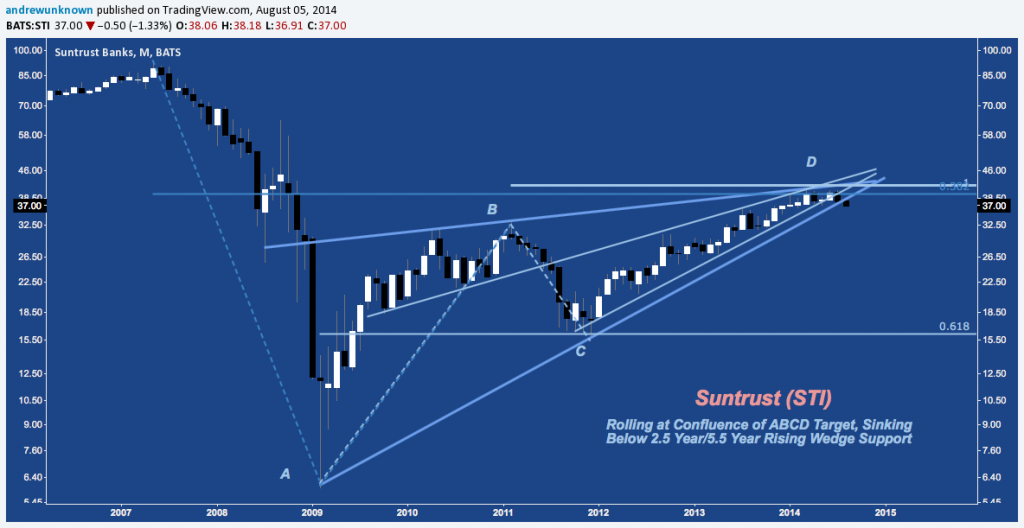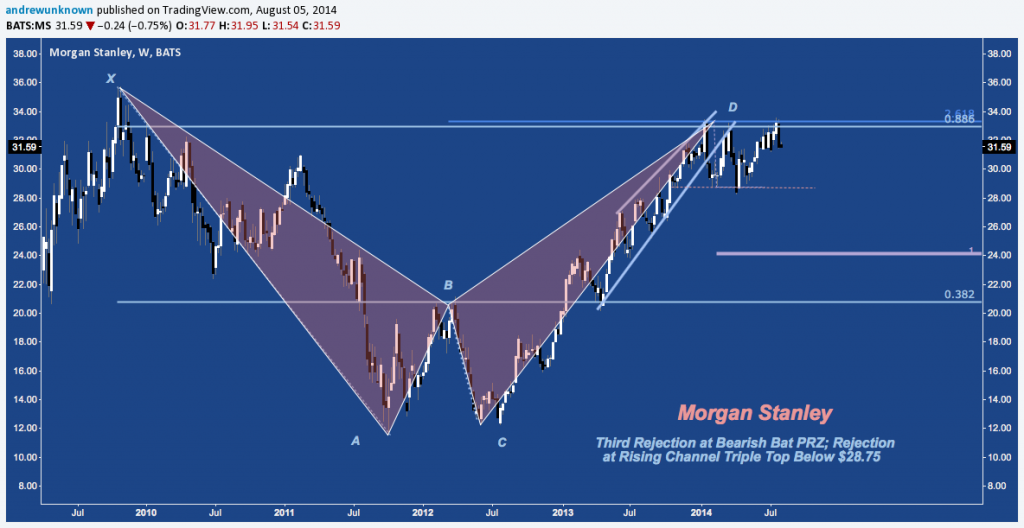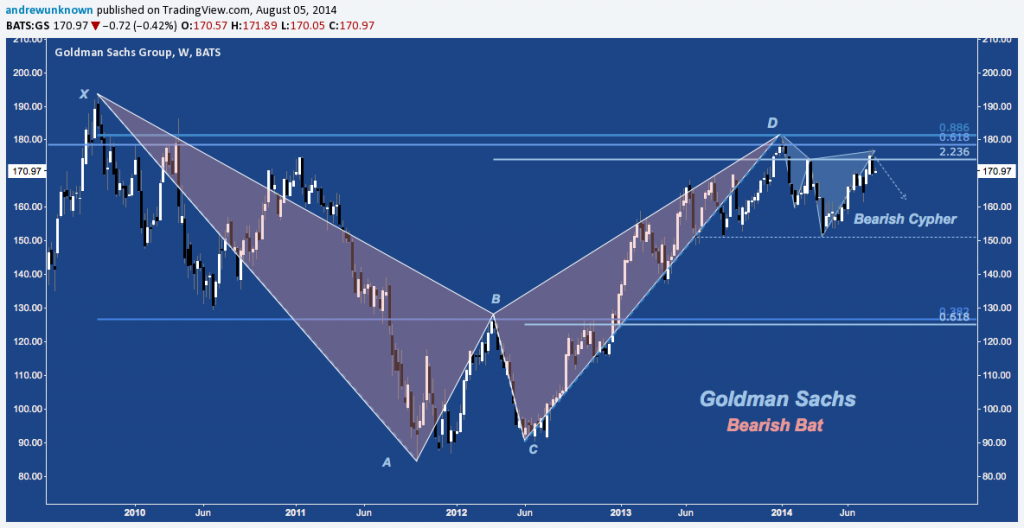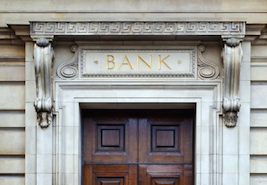 With Q2 Earnings out of the way for
With Q2 Earnings out of the way for TBTF Banks Systemically Important Financial Institutions (SIFI) in the US it’s time again for a brief checkup of the technical health of Money Center Banks. Amidst a faltering sector on the threshold of a (probable) cyclical tightening regime (with the reduction/elimination of IOER) and earnings distended with the bloat of aggressive buyback programs, shares of major US banks continue to stagger through their most challenging passage since their current rising trends began in earnest in October 2011.
Beginning with a broader market context, around this time last year the relative strength of the Financials sector had recovered versus the S&P 500 (SPX) to a level last seen in early 2011. Over the ensuing 12 months, the sector has slowly back-pedaled, working through a grinding move from resistance at one fibonacci cluster level to support at another. Now the Financial Select SPDR ETF (XLF) has drifting out of it’s 2.5 year rising channel to test 18-month lows:
Despite this weakness, Financials is not the weakest among it’s sector peers in the S&P 500, ranking 6-of-9 in 2014 YTD performance.. With 7 months behind it, XLF remains in positive territory, though it’s performance trails the S&P itself almost 3-to-1. Consumer Staples (XLP), Industrials (XLI), and Consumer Discretionary (XLY) are faring worse, with the abysmal late-July performances by XLP and XLI actually pushing XLF up 2 places from 8-of-9 around the Fourth of July.
So Financials aren’t winning Summer 2014’s Race to the Bottom (dubious distinction, I know). To the contrary, XLF has been struggling mightily to regain the compelling upside momentum it enjoyed between the announcement of QE3 (September 2012) and first allusions by FOMC members to the Taper (May-June 2013). Whether due to causation, correlation or some of each, Financials have made very headway since the Fed began to openly discuss reductions in its latest iteration of QE. This sideways grind has led the sector out of it’s 3-year rising wedge and back into the Bearish Butterfly potential reversal zone (PRZ) near 22 it seemed to finally escape in June:
This week features a key medium-term technical decision for XLF: after a 6th touch (and 4th bounce) at 14-month Rising Wedge support, Financials broke down last Friday, fought back to reclaim its supporting trend line yesterday and seems to be affirming the break today.
Overall, XLF is exhibiting deteriorating technicals on multiple timeframes. With that in mind, let’s zoom in to the Banking Sector.
A key industry benchmark, the KBW Bank Index ETF (BKX) looks just like XLF: though notably, KBW failed make a higher high in June v. January as XLF did. It also continues to consolidate it’s 2o12-2013 gains at it’s Bearish Butterfly PRZ (at D) around $70. A major momentum divergence (see RSI in lower panel) has developed over this period. This apparent discrepancy with price may simply be indicative of a trend change (from bullish to neutral) and does not point to a reversal in and of itself. However it t does occur at major structured and harmonic resistance. Until/unless there is sufficient impetus to kick the rising trend back into gear, this range around $70 remains a strong candidate for more bearish inflection point.
Turning to several of the banks in KBW, we see recurrent variations on the theme of structured and harmonic resistance laid out above. Every industry bellwether is setting up at a major form of cyclical resistance.
Bank of America (BAC) entered 2014 on a high note, just a 3.5 year Bearish Bat harmonic pattern near $18 before breaking down from its 2-year Rising Wedge. The balance of the year has been spent on the defensive. Horizontal support near $14.50 remains the BAC’s floor year-to-date; but unless a higher high is made above point D, the Bat points toward significantly lower prices (see B).
JP Morgan Chase (JPM) has built out a similar harmonic pattern over the last 3.5 years: in its case, a Bearish Deep Crab that pegs it’s own reversal zone near $60. JPM failed there (D) in early Spring, sliding to rising channel support before bouncing in May into a bearish Rising Wedge that is now threatening to snap:
Citigroup (C) has persisted in a broad consolidation zone since completing it’s own Bat pattern a year ago. From it’s sideways oscillation a classic H&S Top pattern has formed, capped by it’s failed breakout above August 2009’s then-post-crisis (and very split-adjusted) highs at 54.30, diving to almost $45 in the opening months of 2014.. Citi stabilized in Spring, since building out a Symmetrical Triangle pattern that it broke up from in mid-July – only to end the month with a failure back into the pattern, potentially creating the lower high and right shoulder necessary to set up the potential H&S Top. Where $45 breaks, the H&S Top activates, targeting as low as $36 in confluence with with major horizontal support at early 2012’s swing high and late 2012’s bull flag resistance.
Wells Fargo (WFC) features an even larger harmonic pattern: the 6-year Bearish Butterflythat has been structuring since just before WFC’s pre-Lehman highs in 2008. Of all its peers, Wells has had the most consistent and impressive trend up since the October 2011 low (at C). Note how responsively WFC has reacted to breaks of it 10-week (i.e. 50-day) Simple Moving Average (orange), finding repeated rejections in 2007-2008 as the stock trended down and acting as as a guide to every major continuation flag that has occurred since mid-2009 – with increasing scarcity as dip-buying has become more and more impatient. Now Wells is below it’s 10-week SMA again for the first time since last August-September after tagging rising channel resistance. A move back to channel support returns the stock to $48 and the pattern PRZ that is yet pointing much lower for the stock.
Suntrust (STI) is never only occasionally mentioned in the same breath with the above banks, but it is a top constituent of the KBW index along with them given it’s huge regional banking presence in the Southeast US. It’s also breaking below 2.5-year and 5.5-year Rising Wedge patterns.
Outside KBW’s constituents, let’s check in on a couple other “Bank Holding Companies”:
Morgan Stanley (MS)is seeing yet another rejection near $33.50 after three aggressive attempts this year to breach the level, coinciding with the stock’s 4.5-Year Bearish Bat harmonic pattern. Immediate support below lies near $28.75, where a break would activate Double Top targeting $24.
Last up, let’s review Goldman Sachs (GS). Like Citi and JP Morgan, GS has effectively gone nowhere over the last year. After a strong Q4 last year, Goldman looked like it had the requisite tide of momentum behind it to finally break out above $190 (at X). Instead, the stock finally installed a legitimate test of it’s 5-year Bearish Bat PRZ near $180 and has since moved laterally , building out a smaller Bearish Cypher pattern that is setting up a reversal back toward $150 horizontal support. A break there would activate a Complex H&S Top that targets a measured move down toward $120.
Twitter: @andrewunknown and @seeitmarket
Author holds no exposure to securities mentioned at the time of publication. Commentary provided is for educational purposes only and in no way constitutes trading or investment advice.

